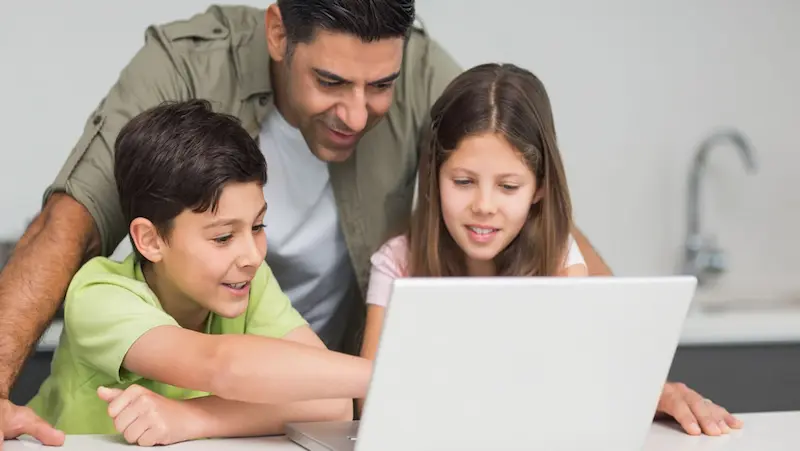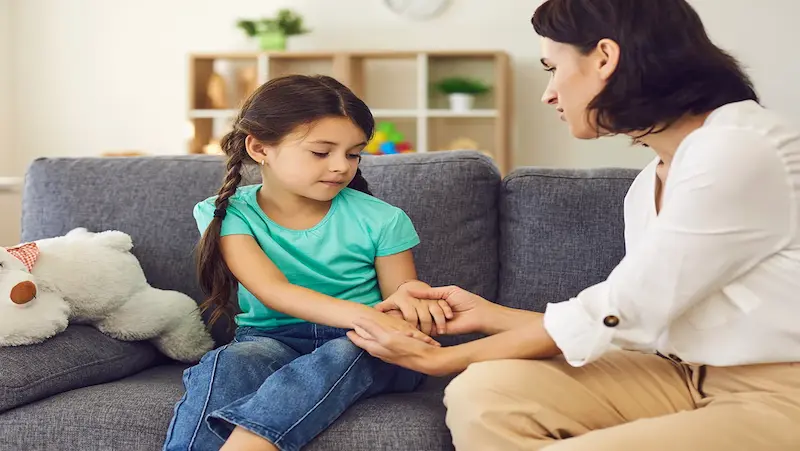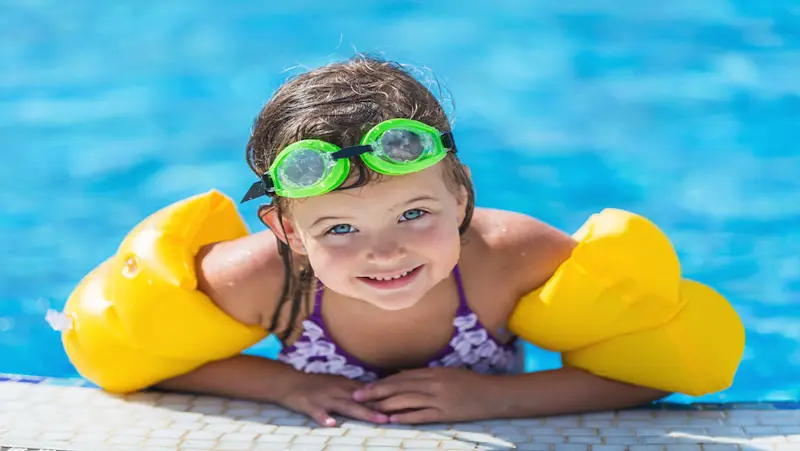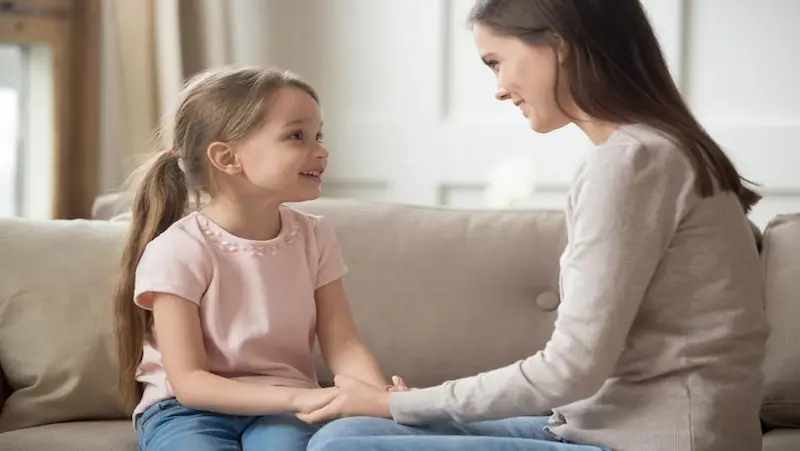In today’s fast-paced world, the safety and well-being of our children have become paramount concerns for parents everywhere. As we navigate a constantly evolving environment filled with new challenges and risks, it’s crucial for parents to be proactive in safeguarding their children. This proactive approach is not just a responsibility but a fundamental act of love and care, ensuring that our precious ones grow up in a secure and nurturing environment. In this article, we will delve into the importance of child safety and explore the ways parents can take an active role in protecting their children.
Table of contents
Creating a Safe Environment
As parents or caregivers, our top priority is ensuring the safety and well-being of our children. One of the most crucial aspects of this responsibility is creating a safe environment within our homes. In this blog post, we’ll explore two key aspects of creating a safe home: childproofing tips and safe storage of potentially harmful substances.

Childproofing Your Home
Childproofing is the first line of defense when it comes to keeping your little ones safe. To get started, take a walk through your home with a keen eye for potential hazards. Here are some tips to consider:
1. Electrical Outlets: Cover electrical outlets with childproof plugs to prevent curious fingers from exploring.
2. Cabinets and Drawers: Install safety latches on cabinets and drawers within your child’s reach, especially those containing sharp objects, cleaning supplies, or potentially dangerous items.
3. Stairs and Gates: Install safety gates at the top and bottom of staircases to prevent falls. Ensure they are securely anchored.
4. Furniture Stability: Secure heavy furniture like bookshelves and dressers to the wall to prevent them from tipping over.
Safe Storage of Chemicals, Medications, and Cleaning Products
Another essential aspect of creating a safe environment is ensuring that chemicals, medications, and cleaning products are stored securely. Here are some guidelines to follow:
1. Locked Cabinets: Store all potentially harmful substances in cabinets that are high up and can be locked securely. This includes cleaning products, detergents, and any items containing hazardous chemicals.
2. Childproof Containers: Use child-resistant caps on medication bottles, and keep them out of reach. Never refer to medicine as “candy” to avoid confusion.
3. Label Everything: Ensure that all containers are clearly labeled. This prevents accidental ingestion of dangerous substances.
4. Regular Purge: Go through your cabinets regularly and dispose of expired or unused medications safely. Many communities have medication drop-off locations for this purpose.
Supervision and Vigilance
For parents of younger children, the importance of constant supervision cannot be overstated. Young kids are naturally curious and full of energy, which can lead them into situations that might be potentially unsafe. Whether it’s exploring the backyard, playing in the living room, or navigating public spaces, keeping a watchful eye on them is crucial.

Here are some tips to consider:
1. Set Clear Boundaries: Establish rules and boundaries for your child’s play area, both at home safety checklist and in public spaces. This helps them understand where it’s safe to explore.
2. Engage in Active Play: Join in on their activities, whether it’s building with blocks or playing in the park. Active involvement not only fosters a stronger bond but also allows you to guide them in safe directions.
3. Childproof Your Home: Make your home child-friendly by securing cabinets, covering electrical outlets, and removing choking hazards. This reduces the likelihood of accidents even when you’re not actively supervising.
4. Stay Within Reach: In public areas like shopping malls or parks, stay within arm’s reach of your child, especially if they’re very young. Hold their hand or keep them in a stroller to ensure their safety.
5. Teach Safety Rules: As your child grows, educate them about basic safety rules, such as looking both ways before crossing the street or not talking to strangers. Knowledge is empowering.
6. Use Technology Wisely: While we want to limit screen time, modern technology can be a helpful tool for supervision. Baby monitors, child tracking devices, and smartphone apps can provide an extra layer of security.
Safe Practices in Daily Life

1. Choose the Right Sleep Space
The first step in creating a safe sleep training methods environment for your baby is selecting an appropriate sleep space. A crib or bassinet is the safest choice. These specially designed sleep surfaces meet safety standards, ensuring that your babyproofing products has a secure place to rest. Make sure the crib or bassinet is free from any broken parts or sharp edges that could harm your child.
2. Avoid Suffocation Hazards
One of the most significant concerns during sleep is the risk of suffocation. To minimize this risk, keep the crib or bassinet free from any loose bedding, pillows, or stuffed animals. These items can inadvertently cover your baby’s face and obstruct their breathing. Instead, use a fitted sheet and a sleep sack or wearable blanket to keep your little one warm.
3. Position Your Baby Correctly
Always place your baby on their back to sleep, both for naps and at night. This position significantly reduces the risk of sudden infant death syndrome (SIDS). Avoid placing your baby on their side or stomach for sleep, as this can increase the chances of suffocation.
4. Maintain a Smoke-Free Environment
Ensure that the sleeping area is free from tobacco smoke, as exposure to smoke can increase the risk of SIDS. If you or someone in your household smokes, it’s crucial to do so outside and away from your baby. Consider quitting smoking to create a healthier environment for your child.
5. Keep an Eye on the Room Temperature
Maintaining a comfortable room temperature is essential for your baby’s safety and comfort. Aim for a room temperature between 68-72°F (20-22°C). Dress your baby in light, breathable layers to prevent overheating.
Internet and Digital Safety

1. Open Communication:
Start by fostering open and honest communication with teenagers. Encourage them to talk to you about their online experiences, friends, and any concerns they may have. Create a judgment-free space where they feel comfortable sharing.
2. Set Clear Boundaries:
Establish rules and guidelines for internet usage. Clearly define what is and isn’t acceptable behavior online. Discuss the potential consequences of breaking these rules to ensure your child understands the importance of responsible online behavior.
3. Age-Appropriate Content:
Ensure that your child accesses age-appropriate content. Many websites and apps offer parental controls and content filtering options that can help restrict access to inappropriate material.
4. Monitor Online Activities:
Regularly check in on your child’s online activities without invading their privacy. Familiarize yourself with the platforms and apps they use, and be aware of their friends and connections.
5. Educate About Privacy:
Teach your child the importance of safeguarding their personal information online. Stress the significance of not sharing sensitive details, such as their real name, address, or phone number, with strangers.
6. Use Parental Control Software:
Consider using parental control software or apps to help manage and monitor your child’s online activities. These tools can provide you with insights into their digital habits and help you set appropriate restrictions.
Teaching Personal Safety

Educating Children about Personal Boundaries
Personal boundaries are like an invisible shield that defines the space around each of us. Teaching children about personal boundaries helps them understand that they have control over their own bodies and who can enter their personal space. Here are some ways to approach this topic:
1. Start Early: Begin talking about personal boundaries from a young age. Use simple language and relatable examples so that children can grasp the concept.
2. Use Age-Appropriate Language: Tailor your conversations to the child’s age and level of understanding. For younger children, you might talk about “private parts” and for older kids, you can use more specific terms.
3. Respect Their Comfort Zones: Encourage your child to speak up if they feel uncomfortable with a hug, kiss, or touch from someone, even if it’s a family member or close friend. Teach them that it’s okay to say no to physical contact that makes them uncomfortable.
Appropriate Touch
Teaching children about appropriate touch goes hand in hand with understanding personal boundaries. Here’s how to approach this important aspect:
1. Teach the Difference: Help children distinguish between appropriate and inappropriate touches. Explain that some touches are meant to be comforting, like a hug from a trusted family member, while others are not okay, such as anyone touching their private parts except when necessary for hygiene or medical reasons.
2. Use Real-Life Scenarios: Share age-appropriate scenarios to illustrate the concept of appropriate touch. For example, you can ask them, “Is it okay for your teacher to touch your arm to get your attention? Is it okay for a stranger to touch your private parts?”
3. Establish Trust: Foster an environment where children feel safe talking to you about their experiences. Make sure they understand that they won’t get in trouble for reporting uncomfortable situations.
Water Safety

1. Pool Fencing:
One of the most crucial steps in creating a safe pool environment is installing proper fencing around your pool. A sturdy, locked fence with a self-closing gate can prevent unsupervised access to the pool area. The fence should be at least four feet high and have no footholds or handholds that would allow a child to climb over.
2. Supervision:
Never underestimate the power of attentive supervision around the pool. Children should never be left unattended near the water, even for a moment. Designate a responsible adult as the “water watcher” when kids are swimming, ensuring their full attention is on the pool. Distracted or inattentive supervision is a leading cause of accidents.
3. Swimming Lessons:
Enrolling children (and even adults) in swimming lessons can be a lifesaver. Toddler learning activities to swim not only builds confidence but also equips individuals with essential water survival skills. It’s never too early or too late to start swimming lessons, and they can make a significant difference in emergency situations.
4. CPR Training:
Every pool owner and frequent swimmer should consider taking a CPR and first aid course. Knowing how to respond in an emergency can mean the difference between life and death. Quick action can be critical in the event of an accident, and having CPR training can save lives.
5. Life-saving Equipment:
Keep life-saving equipment, such as lifebuoys, rescue hooks, and a first-aid kit, readily accessible near the pool. Familiarize yourself with how to use these tools, and ensure they are in good working condition at all times.
Conclusion
In conclusion, safeguarding our children should always be our top priority. Their safety not only shapes their present well-being but also lays the foundation for their future. By prioritizing child safety, we ensure that they can grow, learn, and explore in a secure environment, giving them the best chance to thrive and become responsible, confident adults. It is a collective responsibility that demands our unwavering commitment, for every child deserves the chance to flourish, free from harm and fear.
Also, BrightChamps provides a comprehensive platform for learning about money for kids, offering interactive and engaging resources that teach financial literacy, budgeting, saving, and other essential money management skills.
Frequently Asked Questions
A1. Always supervise young children, teach them about stranger danger, and keep emergency numbers handy.
A2. Secure cabinets, cover outlets, use safety gates, and anchor heavy furniture to prevent accidents.
A3. Common hazards include choking hazards, sharp objects, chemicals, and unsecured stairs.
A4. Childproof by locking cabinets, using corner protectors, and securing cords and blinds.
A5. Use car seats, childproof hotel rooms, and keep kids within sight in crowded places.
A6. Use age-appropriate discussions, role-play scenarios, and emphasize open communication.
A7. Follow the manufacturer’s guidelines, ensure a snug fit, and use rear-facing seats for infants.


 We are an army of educators and passionate learners from BrightChamps family, committed to providing free learning resources to kids, parents & students.
We are an army of educators and passionate learners from BrightChamps family, committed to providing free learning resources to kids, parents & students.







